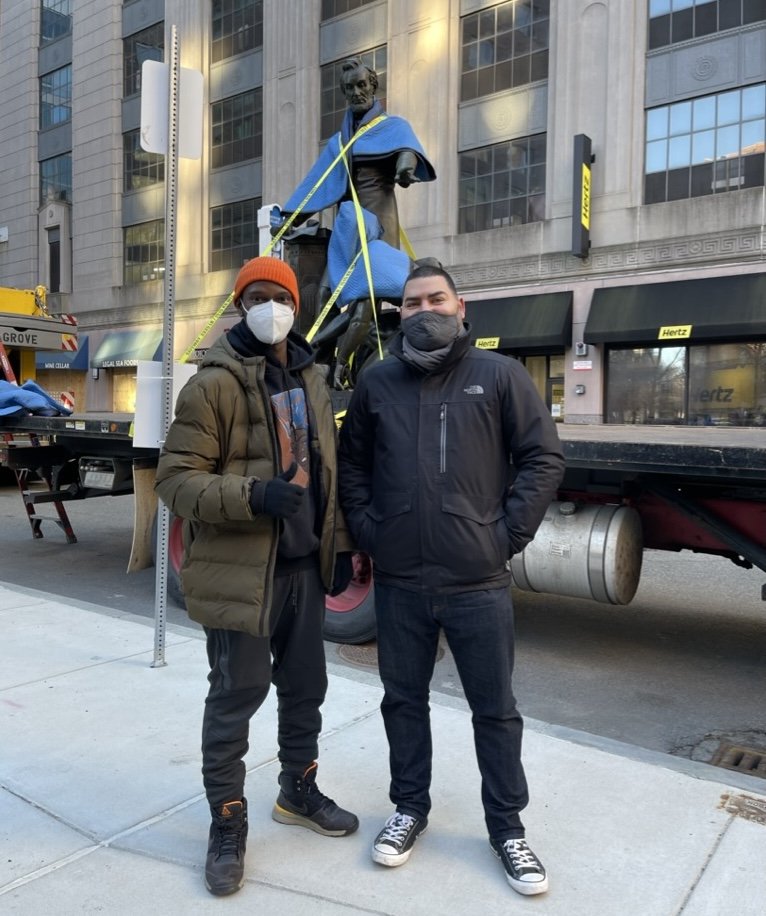Monuments & Memorials
My interest in monuments and memorials was first piqued by the controversy surrounding plans to remove the Robert E. Lee statue in Charlottesville. It became the focus on the white supremacist “Unite the Right” rally, complete with khaki-clad tiki torch bros chanting antisemitic slogans, and the murder of an antiracist protester.
It wasn’t long before I came across an image of the Emancipation Memorial in Washington, D.C. It felt familiar, and I realized I had seen an exact copy of it in Boston. I first saw it as a college student two decades earlier and recall telling friends how racist it seemed. I wondered what it meant that I had completely forgotten, even as the debate about statues was raging, that a monument I’d once viewed as racist stood uncontested in my own back yard.
Something about me – when I see a string, I pull on it. And so, I began researching this statue with no particular end in mind other than to understand how it got there and why it still stood. I dug in multiple archives, read countless books and news articles, and started attending events focused on taking down racist statues.
After months of research, I begin writing and revising. What resulted was a deeply-researched 2,600-word essay titled, A monument to white supremacy stands uncontested in our own back yard: What, if anything, are we going to do about it? I actually finished the piece in an all day and night writing session at an Airbnb in Austin, when I was supposed to be partying at Austin City Limits.
“We have to recognize that just because an image is cast in bronze and set upon a granite base by those with the privilege and power to do so, we are not bound to honor it for all of eternity.”
I hit publish and shared on social. I began teaching about monuments and memorials, and students would occasionally get worked up about taking one of the statues down. I was even invited by BU’s Washington, DC program to lecture in front of the DC statue and students there felt similarly. I did an interview and sat on some panels about monuments, but that was it. The statues remained.
Then came 2020 and with it COVID and the righteous uprising following the murder of George Floyd. I became aware that a local artist Tory Bullock had launched an effort citing my work to take the Boston statue down. He made his case in a compelling video and launched a petition that garnered more than 12,000 signatures. The Boston Art Commission took up his cause and on June 30, 2020 they voted to remove the statue by year’s end.
I was honored to get an invite to the statue’s removal on December 29, 2020. It was a private event for fear of disruption, so there were just a few of us there as workers unbolted the statue and placed it on a flatbed truck. News cameras arrived just before the statue was hauled away to an undisclosed location. Some local and national coverage followed, with Tory being rightly credited for his activism.
Update: The City of Boston’s Mayor’s Office of Arts and Culture recently secured a $3 million grant from the Mellon Foundation to launch a project called Un-monument | Re-monument | De-Monument: Transforming Boston. The project will bring temporary monuments and free educational programming to Boston. I was honored to be invited to join the Transformative Art & Monuments Advisory Team, where I will be reviewing and recommending artwork.

